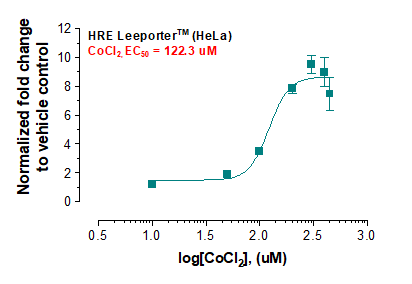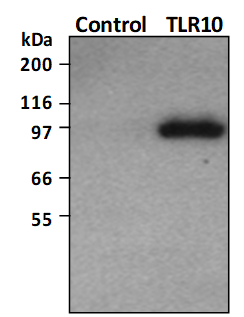Recombinant Human S100A16
Shipping Info:
For estimated delivery dates, please contact us at [email protected]
| Amount : | 50 µg |
| Content : | Lyophilized from a 0.2 µm filtered solution of 20mM Tris, 500mM NaCl, pH8.0. |
| Storage condition : | Lyophilized protein should be stored at -20°C, though stable at room temperature for 3 weeks. Reconstituted protein solution can be stored at 4-7°C for 2-7 days. Aliquots of reconstituted samples are stable at -20°C for 3 months. |
| AA sequence : | MSDCYTELEKAVIVLVENFYKYVSKYSLVKNKISKSSFREMLQKELNHMLSDTGNRKAADKLIQNLDANHDGRISFDEYWTLIGGITGPIAKLIHEQEQQSSS |
Source: E. coli.
MW :11.8kD.
Recombinant Human Protein S100-A16 is produced by our E.coli expression system and the target gene encoding Met1-Ser103 is expressed. S100A16 is a member of S100 protein superfamily that carries calcium-binding EF-handmotifs. S100 proteins are cell-and tissue-specific and are involved in many intra-and extracellular processes hrough interacting with specific target proteins. S100A16 expression was found to be astrocyte-specific. The S100A16 protein was found to accumulate within nucleoli and to translocate to the cytoplasm in response to Ca(2+) stimulation. The homodimeric structure of human S100A16 in the apo state has been obtained both in the solid state and insolution, resulting in good agreement between the structures with the exception of two loop regions. The homodimeric solution structure of human S100A16 was also calculated in the calcium(II)-bound form. Immunoprecipitation analysis revealed that S100A16 could physically interact with tumor suppress or protein p53, also a known inhibitor of adipogenesis. Overexpression or RNA interference-initiated reduction of S100A16 led to the inhibition or activation of the expression of p53-responsivegenes, respectively. S100A16 protein is a novel adipogenesis-promoting factor.
MW :11.8kD.
Recombinant Human Protein S100-A16 is produced by our E.coli expression system and the target gene encoding Met1-Ser103 is expressed. S100A16 is a member of S100 protein superfamily that carries calcium-binding EF-handmotifs. S100 proteins are cell-and tissue-specific and are involved in many intra-and extracellular processes hrough interacting with specific target proteins. S100A16 expression was found to be astrocyte-specific. The S100A16 protein was found to accumulate within nucleoli and to translocate to the cytoplasm in response to Ca(2+) stimulation. The homodimeric structure of human S100A16 in the apo state has been obtained both in the solid state and insolution, resulting in good agreement between the structures with the exception of two loop regions. The homodimeric solution structure of human S100A16 was also calculated in the calcium(II)-bound form. Immunoprecipitation analysis revealed that S100A16 could physically interact with tumor suppress or protein p53, also a known inhibitor of adipogenesis. Overexpression or RNA interference-initiated reduction of S100A16 led to the inhibition or activation of the expression of p53-responsivegenes, respectively. S100A16 protein is a novel adipogenesis-promoting factor.
Endotoxin : Less than 0.1 ng/µg (1 IEU/µg) as determined by LAL test.
For Research Use Only. Not for use in diagnostic/therapeutics procedures.
| Subcellular location: | Nucleus, Cytoplasm |
| Tissue Specificity: | Ubiquitous (PubMed:14684152). Highly expressed in esophagus, adipose tissues and colon. Expressed at lower level in lung, brain, pancreas and skeletal muscle. Expression is up-regulated in tumors of bladder, lung, thyroid gland, pancreas and ovary (PubMed:14684152). Expressed in astrocytes (PubMed:17030513). |
| BioGrid: | 126627. 39 interactions. |
|
There are currently no product reviews
|

















.png)












